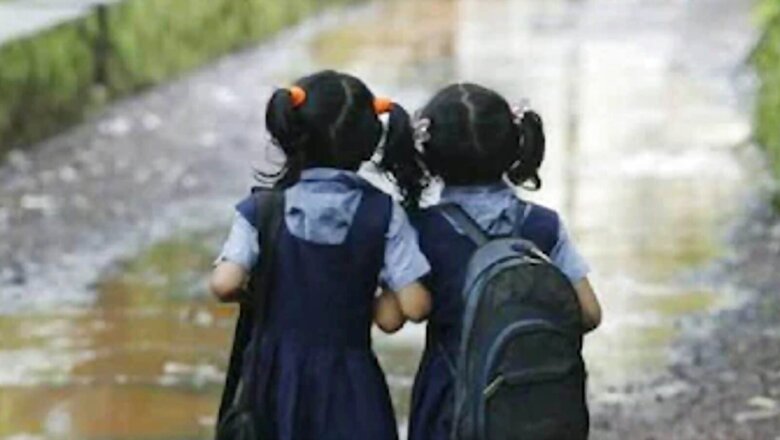
views
From just 957 females per 1,000 males in 1992-93, India’s overall sex ratio has improved to 1,020 in 2019-21, according to official figures. However, the numbers analysed by CNN-News18 show that the sex ratio at birth and the child sex ratio (0-6 years) still needs improvement.
As per the fifth report of the National Family Health Survey (NFHS-5, 2019-21), the sex ratio of the total population is 1,020 for the country, with rural at 1,037 and urban at 985.
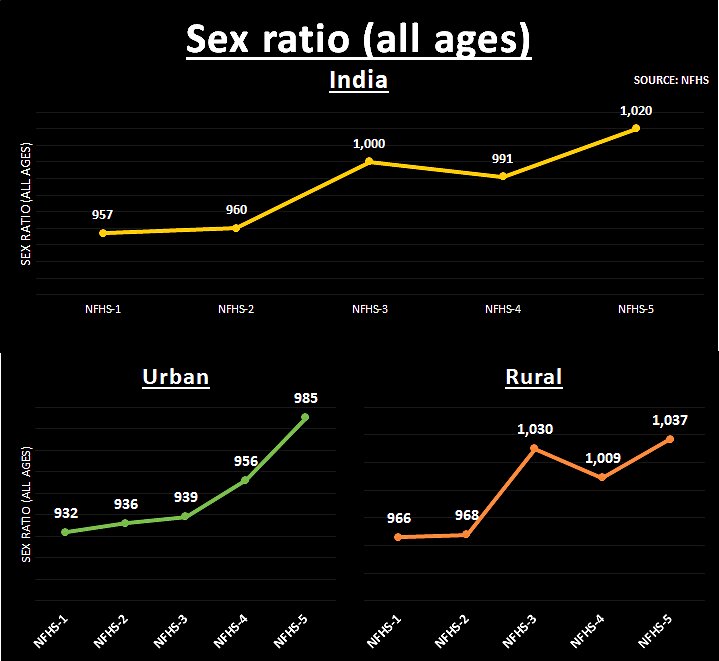
The report suggested that the sex ratio is much higher in rural areas than in urban due to the greater share of males in the rural-urban migration flows.
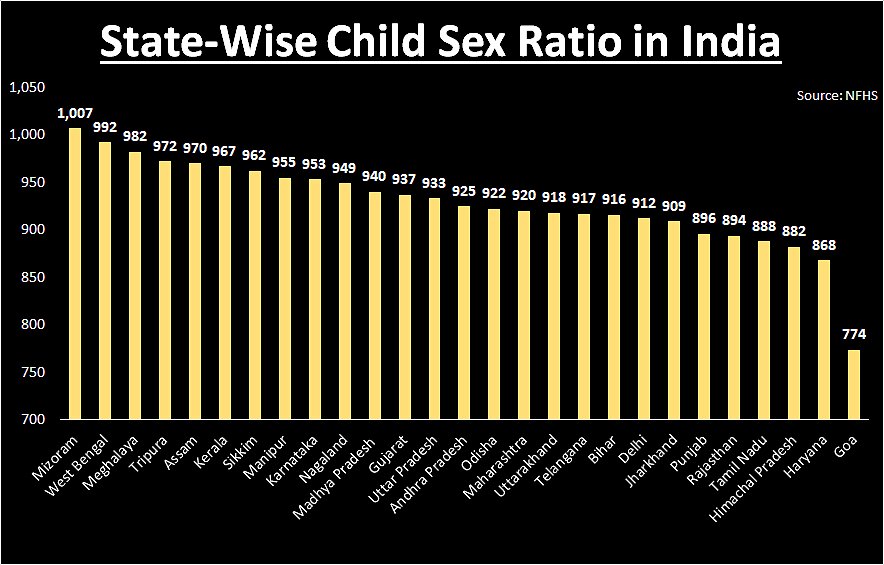
While this may be a silver lining, numbers also suggested that there are still fewer girls against boys in the below-6 age group. Sex ratio at birth for children born in the past five years, as per NFHS-5, was 929, an improvement from 919 in NFHS-4 (2015-16), the Union Ministry of Health and Family Welfare data shows.
The official data also shows that the sex ratio for population below six years of age is affected both by the sex ratio at birth and differential mortality by sex after birth.
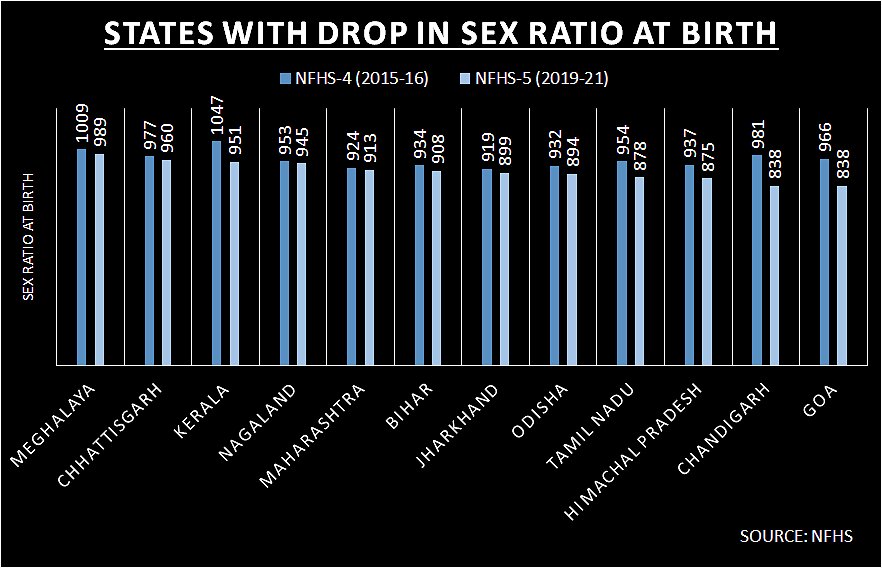
“While the sex ratio at birth can be affected by sex-selective abortions targeting the female foetus, deliberate discrimination against the girl child can result in higher mortality rates for girls than for boys,” it added.
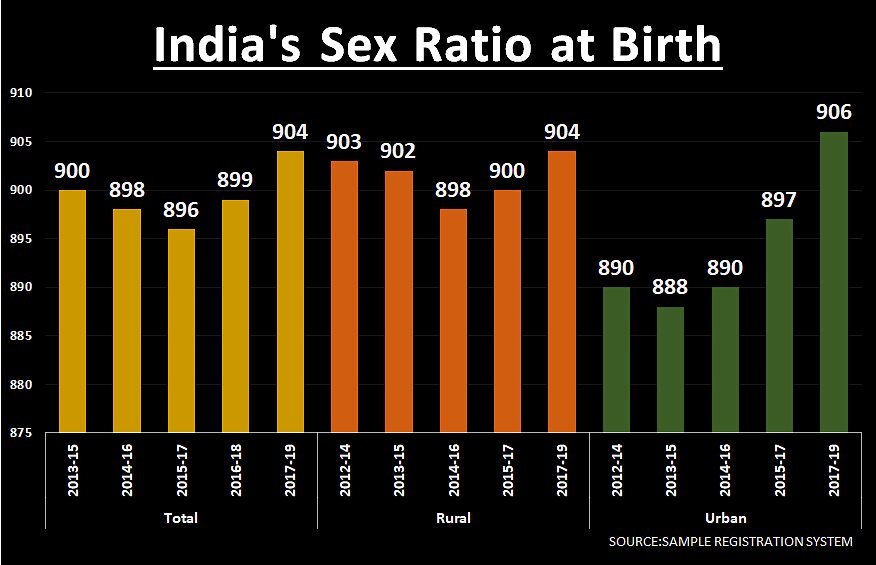
Sex ratio is defined as the number of females per 1,000 males in the population and is an important social indicator to measure the extent of prevailing equity between males and females in a society at a given point of time. Child sex ratio is basically defined as the number of females per 1,000 males in the 0-6 age group.
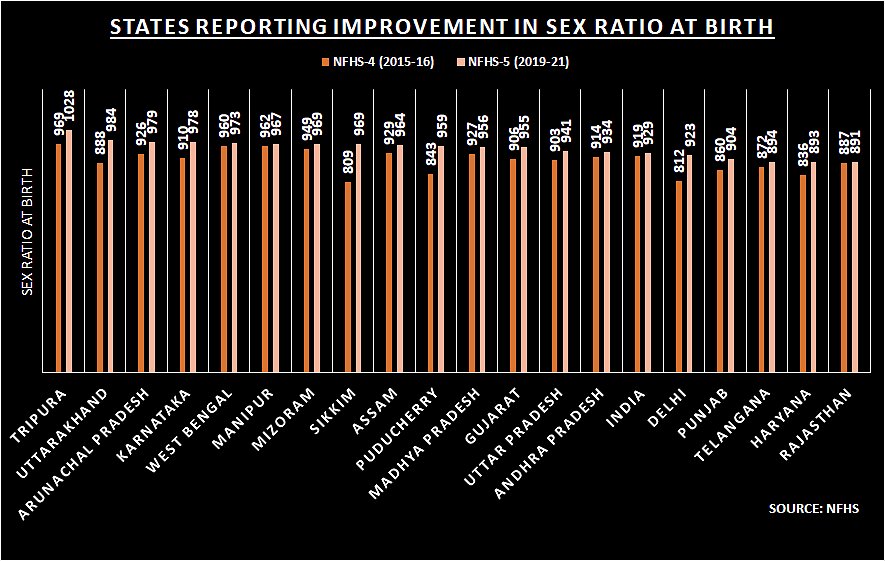
Apart from the NFHS, the Sample Registration System (SRS) also monitors sex ratio on a continuous basis. The estimates of sex ratio at birth under SRS are derived by pooling the data for three years on moving average basis.
As per the SRS maintained by the Office of the Registrar General, India’s sex ratio at birth between 2013-15 and 2017-19 has reported a marginal improvement – from 900 to 904.
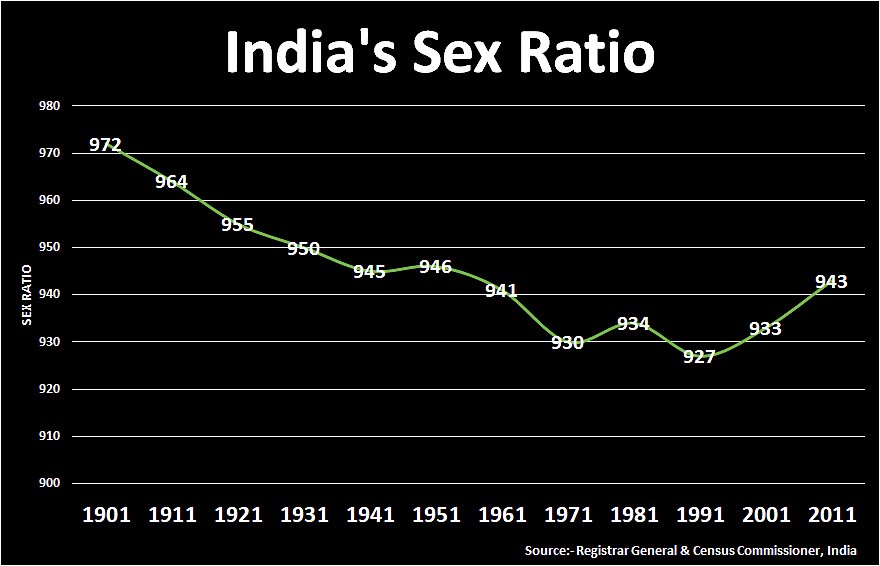
As per the data from the Registrar General and Census Commissioner, India’s sex ratio was at its best in 1901. However, over the decades, it reported a drop, ending lowest to 927 in 1991.
However, since the last three census – 1991, 2001 and 2011 — the overall sex ratio has reported a consistent increase as it reached 943 in 2011.
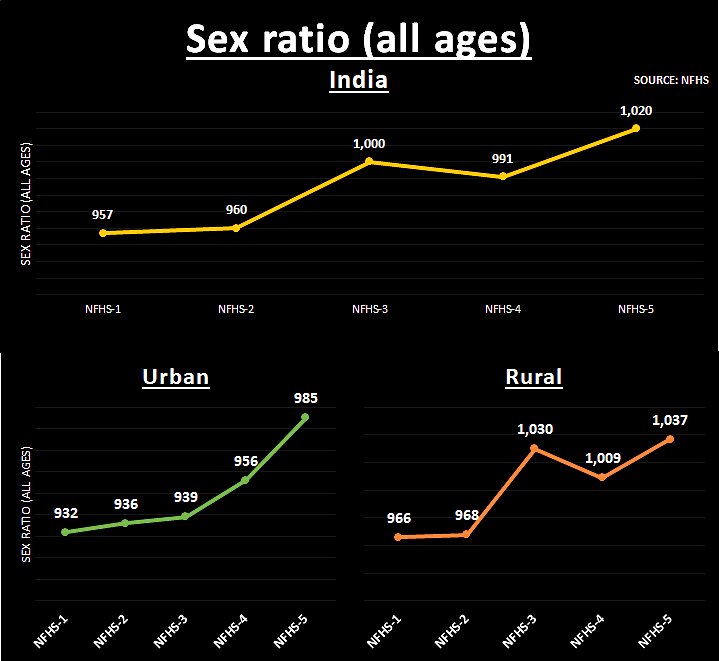
The fight to save the girl child in India has been going on since long.
The Government of India has enacted a comprehensive legislation, the Pre-conception and Pre-Natal Diagnostic Techniques (Prohibition of Sex Selection) (PC&PNDT) Act in 1994, for prohibition of sex selection, before and after conception and for regulation of prenatal diagnostic techniques. Various initiatives have also been taken by the government at the Centre and state levels to improve sex ratio.
Child sex ratio is a vital indicator to check the abnormalities which are leading to imbalanced sex ratio. “If the sex ratio is improved at birth, then it would surely lead to increase in overall sex ratio in each age group,” the Ministry said.
Read all the Latest India News here
















Comments
0 comment